Abhilash Singh
SHS: Scorpion Hunting Strategy Swarm Algorithm
Jul 19, 2024Abstract:We introduced the Scorpion Hunting Strategy (SHS), a novel population-based, nature-inspired optimisation algorithm. This algorithm draws inspiration from the hunting strategy of scorpions, which identify, locate, and capture their prey using the alpha and beta vibration operators. These operators control the SHS algorithm's exploitation and exploration abilities. To formulate an optimisation method, we mathematically simulate these dynamic events and behaviors. We evaluate the effectiveness of the SHS algorithm by employing 20 benchmark functions (including 10 conventional and 10 CEC2020 functions), using both qualitative and quantitative analyses. Through a comparative analysis with 12 state-of-the-art meta-heuristic algorithms, we demonstrate that the proposed SHS algorithm yields exceptionally promising results. These findings are further supported by statistically significant results obtained through the Wilcoxon rank sum test. Additionally, the ranking of SHS, as determined by the average rank derived from the Friedman test, positions it at the forefront when compared to other algorithms. Going beyond theoretical validation, we showcase the practical utility of the SHS algorithm by applying it to six distinct real-world optimisation tasks. These applications illustrate the algorithm's potential in addressing complex optimisation challenges. In summary, this work not only introduces the innovative SHS algorithm but also substantiates its effectiveness and versatility through rigorous benchmarking and real-world problem-solving scenarios.
A deep learning approach to predict the number of k-barriers for intrusion detection over a circular region using wireless sensor networks
Aug 25, 2022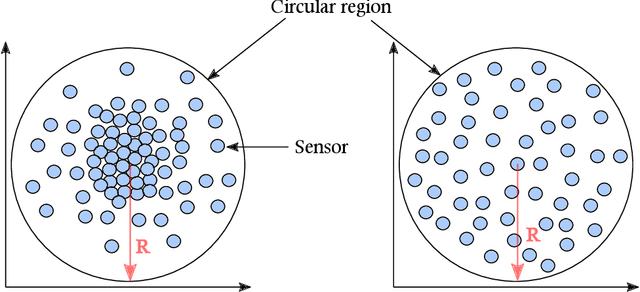
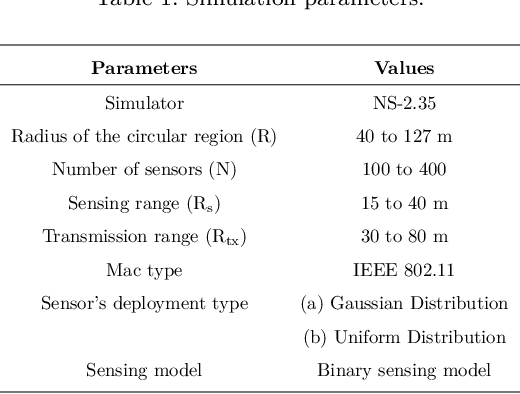
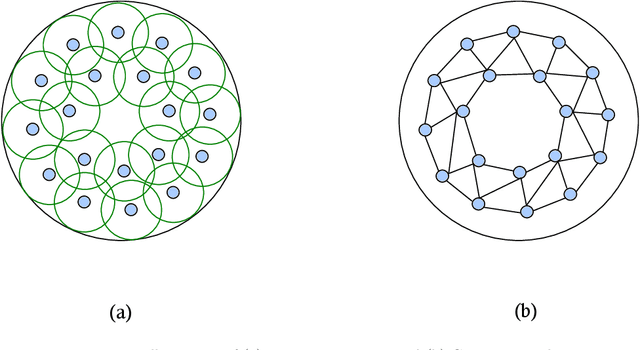
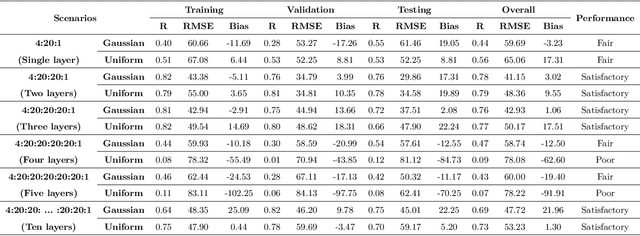
Abstract:Wireless Sensor Networks (WSNs) is a promising technology with enormous applications in almost every walk of life. One of the crucial applications of WSNs is intrusion detection and surveillance at the border areas and in the defense establishments. The border areas are stretched in hundreds to thousands of miles, hence, it is not possible to patrol the entire border region. As a result, an enemy may enter from any point absence of surveillance and cause the loss of lives or destroy the military establishments. WSNs can be a feasible solution for the problem of intrusion detection and surveillance at the border areas. Detection of an enemy at the border areas and nearby critical areas such as military cantonments is a time-sensitive task as a delay of few seconds may have disastrous consequences. Therefore, it becomes imperative to design systems that are able to identify and detect the enemy as soon as it comes in the range of the deployed system. In this paper, we have proposed a deep learning architecture based on a fully connected feed-forward Artificial Neural Network (ANN) for the accurate prediction of the number of k-barriers for fast intrusion detection and prevention. We have trained and evaluated the feed-forward ANN model using four potential features, namely area of the circular region, sensing range of sensors, the transmission range of sensors, and the number of sensor for Gaussian and uniform sensor distribution. These features are extracted through Monte Carlo simulation. In doing so, we found that the model accurately predicts the number of k-barriers for both Gaussian and uniform sensor distribution with correlation coefficient (R = 0.78) and Root Mean Square Error (RMSE = 41.15) for the former and R = 0.79 and RMSE = 48.36 for the latter. Further, the proposed approach outperforms the other benchmark algorithms in terms of accuracy and computational time complexity.
* Singh, A., Amutha, J., Nagar, J., & Sharma, S. (2022). A deep learning approach to predict the number of k-barriers for intrusion detection over a circular region using wireless sensor networks. Expert Systems with Applications, 118588
Nature-Inspired Algorithms for Wireless Sensor Networks: A Comprehensive Survey
Dec 24, 2020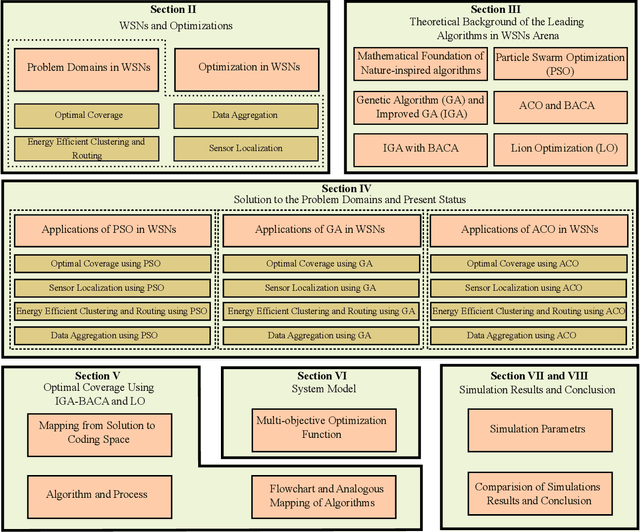
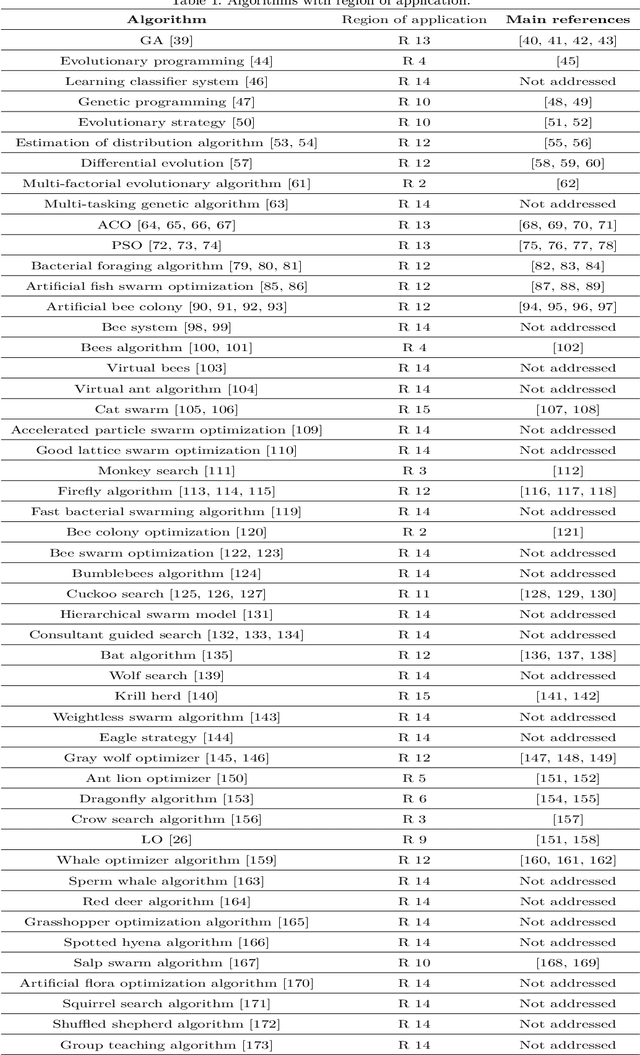
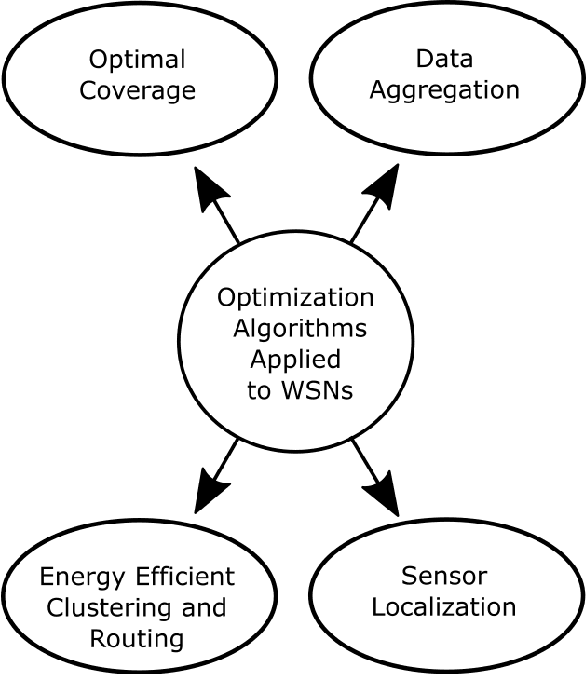
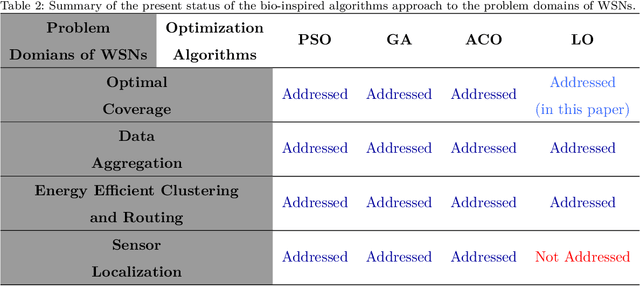
Abstract:In order to solve the critical issues in Wireless Sensor Networks (WSNs), with concern for limited sensor lifetime, nature-inspired algorithms are emerging as a suitable method. Getting optimal network coverage is one of those challenging issues that need to be examined critically before any network setup. Optimal network coverage not only minimizes the consumption of limited energy of battery-driven sensors but also reduce the sensing of redundant information. In this paper, we focus on nature-inspired optimization algorithms concerning the optimal coverage in WSNs. In the first half of the paper, we have briefly discussed the taxonomy of the optimization algorithms along with the problem domains in WSNs. In the second half of the paper, we have compared the performance of two nature-inspired algorithms for getting optimal coverage in WSNs. The first one is a combined Improved Genetic Algorithm and Binary Ant Colony Algorithm (IGABACA), and the second one is Lion Optimization (LO). The simulation results confirm that LO gives better network coverage, and the convergence rate of LO is faster than that of IGA-BACA. Further, we observed that the optimal coverage is achieved at a lesser number of generations in LO as compared to IGA-BACA. This review will help researchers to explore the applications in this field as well as beyond this area. Keywords: Optimal Coverage, Bio-inspired Algorithm, Lion Optimization, WSNs.
 Add to Chrome
Add to Chrome Add to Firefox
Add to Firefox Add to Edge
Add to Edge